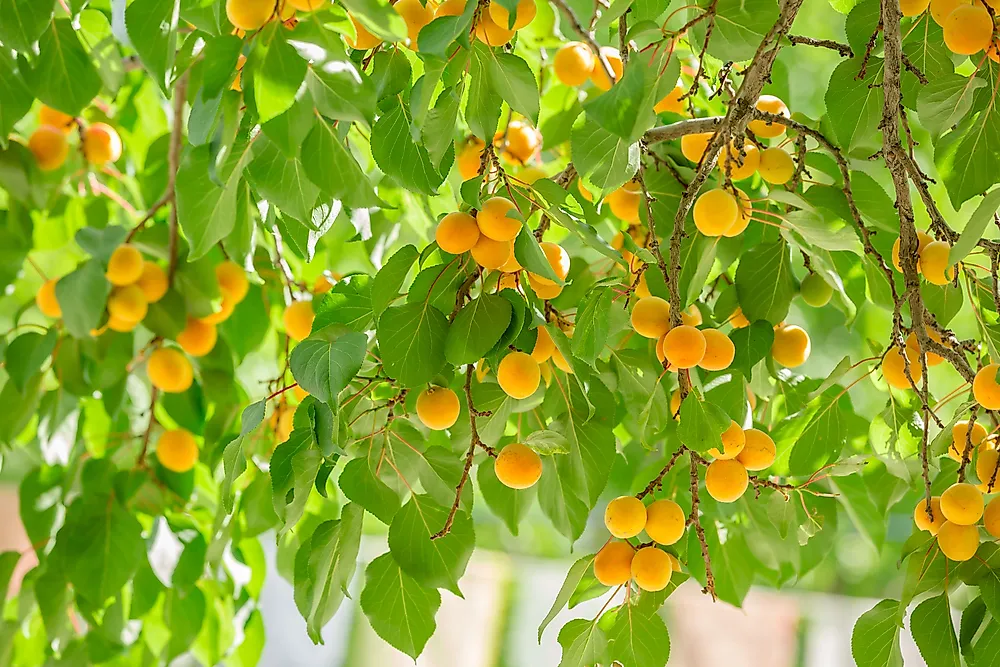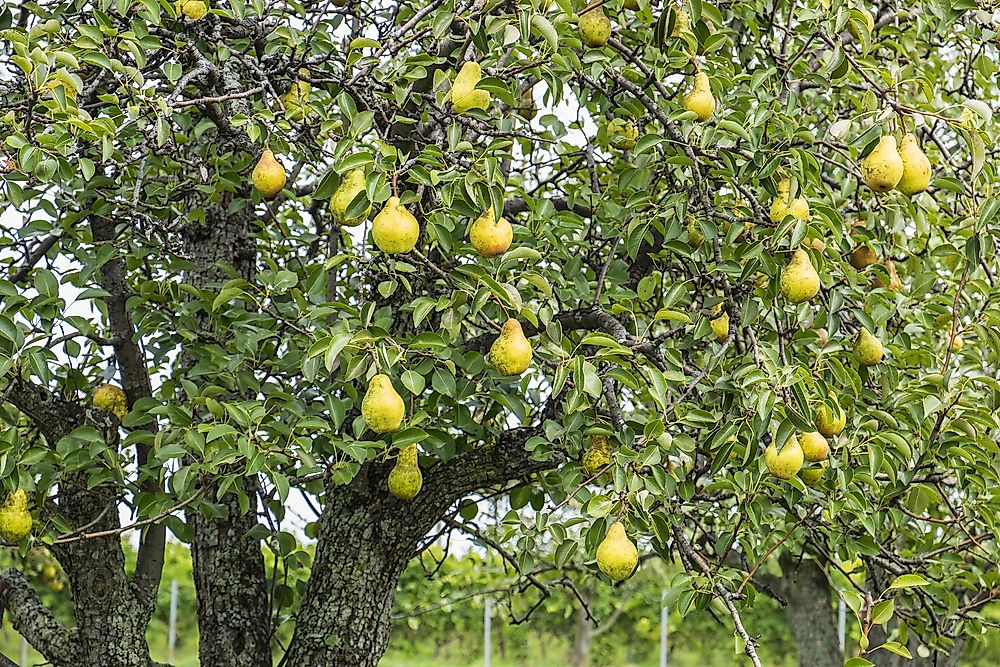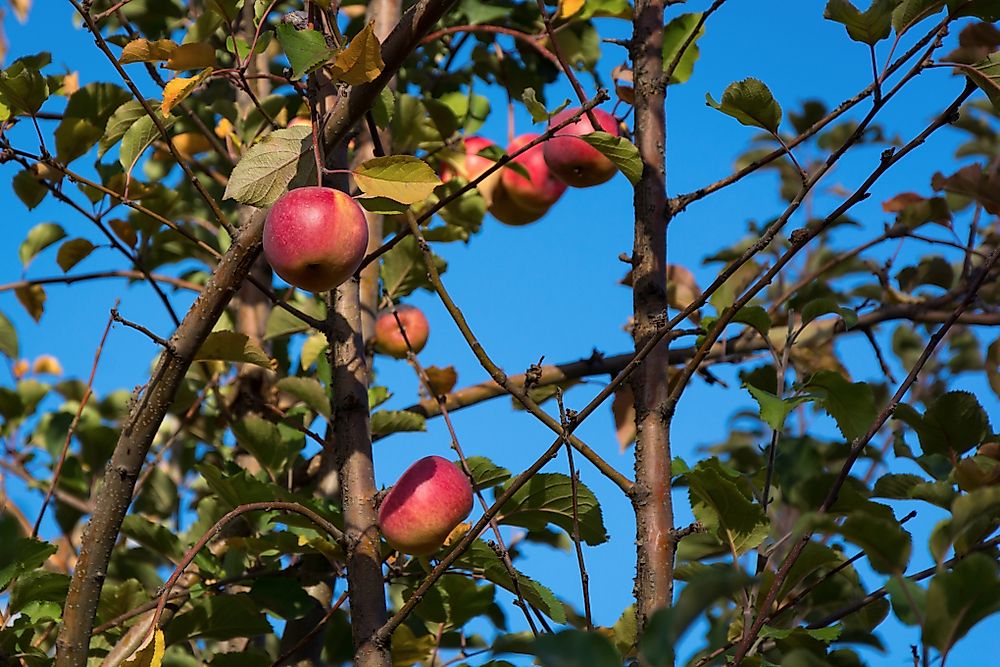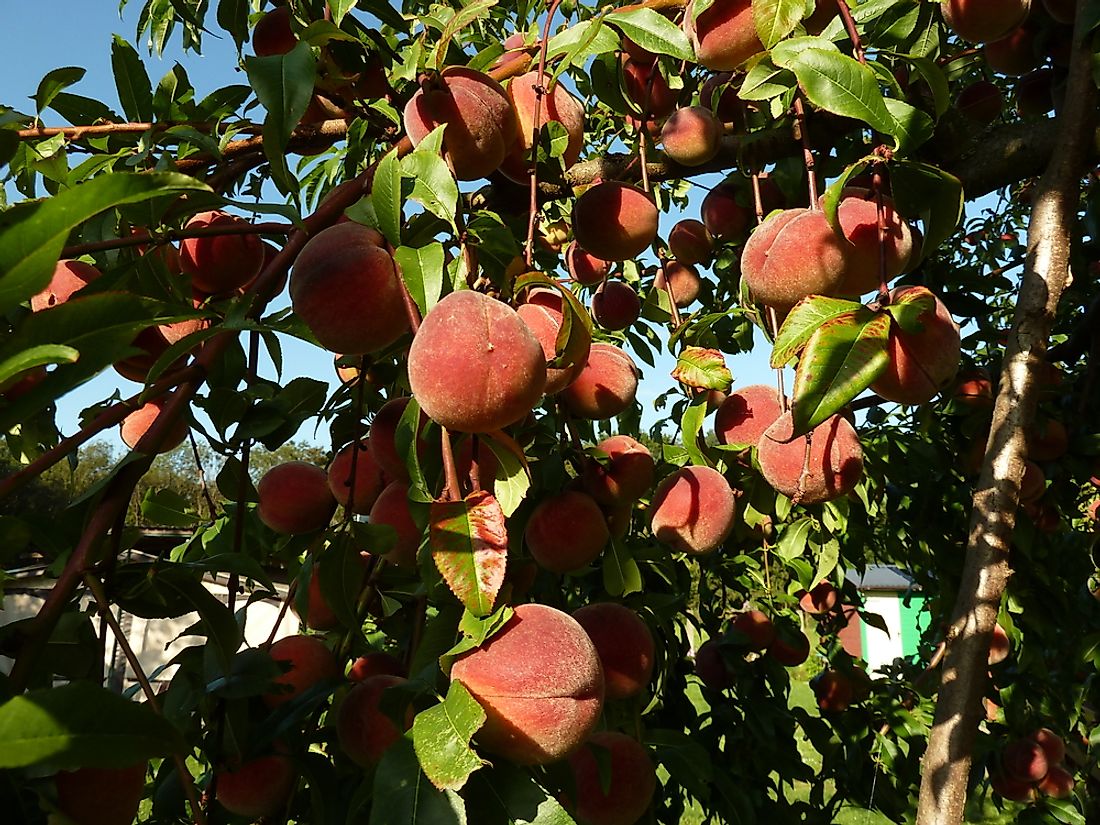Trees That Take the Longest to Fruit

Plants contribute the largest chunk of what the world consumes, more than animals or the seas. A significant part of our diets consists of fruits, they make our bodies healthy, strong, and raise our immunity levels. The fruits we eat are harvested from fields across the world, and humans have billions of fruit trees to thanks for the constant supply of fruits. Fruits are produced by flowering plants; pomology (study and cultivation of fruits) divide fruits depending on the classification of the plant. Some are pome fruits such as pears and apples while some are stone fruits which include almonds, peaches, and cherries. Fruit trees vary in the amount of time it takes a plant to grow to the time it produces its first fruits. This article discusses some of the fruit trees that take the longest time to fruit.
10. Pawpaw Trees (5-7 years)
The pawpaw tree (Asimina triloba) is a deciduous tree native to Canada and eastern United States. The tree produces the pawpaw fruits consumed by humans, birds, and other animals. The success of the plant largely depends on pollination and farmers across the world attract pollinators such as bees and butterflies to their farm specifically for this function. The pawpaw tree takes between five to seven years to fruit. The pawpaw fruits are known to ripe between the months of August to mid-September. The pawpaw fruit is mostly eaten raw at room temperature or blended with other fruits to make a fruit cocktail. In some parts of the world, it is blended and mixed with ice-cream.
9. Sweet Cherry Trees (4-7 years)
The sweet cherry tree (Prunus avium) is native to Europe, the British Isles off the coast of North Africa, western Asia, and western Himalaya. The sweet cherry tree is among the most sought after tree because of its sweet fruit. The sweet cherry is a ready to eat fruit, and one can just pluck one from the tree, pop it, and enjoy its sweet taste. It takes a sweet cherry tree between four to seven years before it begins to fruit. They grow vigorous and are likely to take over the fruit yard if not controlled.
8. Pear Trees (4-6 years)

Pear trees refer to any of the trees species in that belong to the genus Pyrus. There are about 3,000 known species of the pear tree, and all produce different varieties the pear fruit. It is native to western Europe and parts of eastern Asia. European pear trees are known to produce sweet, juicy fruits with smooth and firm coats and possess the traditional pear shape. They are grown in mild regions such as France. The Asian pear tree has a juicy white flesh, but instead of the traditional pear shape, it is round and crisp. The pear tree takes between 4-6 years to fruit.
7. Plum Trees (3-6 years)
Plumtree refers to any of the plum producing trees in the genus Prunus. A dusty-white waxy coat characterizes plum trees. They are native eastern Europe and the far east particularly Japan. The European plum tree produces oval-shaped fruits with soft and flesh skin. They are mostly used in jellies and jams or dried up to make prunes. The Japanese plum trees produce a round fruit with a firm and fleshy skin. They are mostly consumed raw, used in cooking or canned. Plum trees fruit after 3-6 years.
6. Sour Cherry Trees (3-5 years)
The Sour Cherry tree (Prunus cerasus) produces the sour cherry. The fruit is not consumed raw due to its sour taste, but it is used for cooking and baking. The sour cherry tree is self-pollinating, but researcher’s advice is planting a wide variety in the same field. The fruit is smaller compared to those produced by the sweet cherry tree. It is believed that the tree originated as a hybrid in eastern Europa and the Iranian plateau. The tree takes between 3-5 years to fruit.
5. Apple Trees (2-5 years)

The apple tree (Malus pumila) produces apples. It is cultivated on the four corners of the world because of the health benefits of the apple fruit. The apple tree traces its origin to Central Asia. The wild species of the tree (Malus sieversii) is still found in the forests of Asia. The apple tree was introduced to America by European colonialist. Once harvested, the flesh and skin of the apple are consumed except for the seeds. The tree takes between 2-5 years to fruit.
4. Apricot Trees (2-5 years)
An apricot tree is any of the tree species in the genus Prunus that produces the apricot fruit. The tree is known to be more productive in the continental and the Mediterranean climates. They are best harvested during the summer when their skin is golden, fleshy and juicy. Although they can be consumed raw, they taste better when frozen or canned. An apricot tree takes 2-5 years to fruit.
3. Persimmon Trees (3-4 years)
The persimmon tree is any of the trees that produce the persimmon fruit in the genus Diospyros. The most common is the Japanese persimmon. It is believed that plant originated from the far east particularly China and Japan. When ripe, the possess a fiery orange color. The tree takes 3-4 years to fruit.
2. Nectarine Trees (2-4 years)

The Nectarine tree (Prunus persica) is a variant of the typical peach. Its origin can be traced to China about four millenniums ago. The nectarine and peach trees are physically indistinguishable unless with a very keen eye. The nectarine fruit is either yellow, red, or white and is a rich source of vitamin C. They are best consumed fresh but can be canned or processed to jam. A nectarine tree takes about 2-4 years to fruit.
1. Peach Trees (2-4 years)
The peach tree (Prunus persica) produces the peach fruit and is native to Northwest China. The peach fruit is closely related to the nectarine and even belong to the same species but is considered different fruits. The peach tree takes between 2-4 years to fruit.











